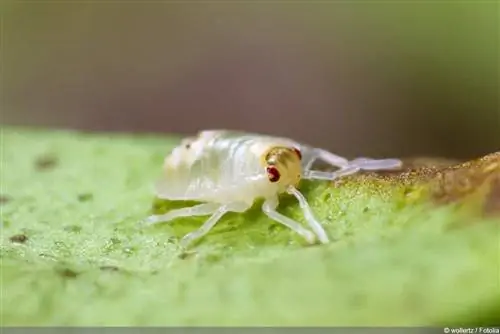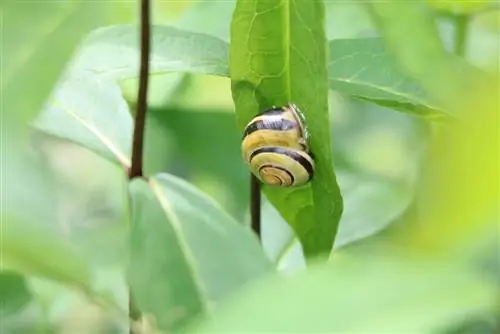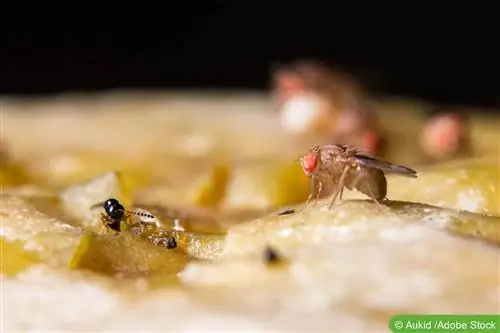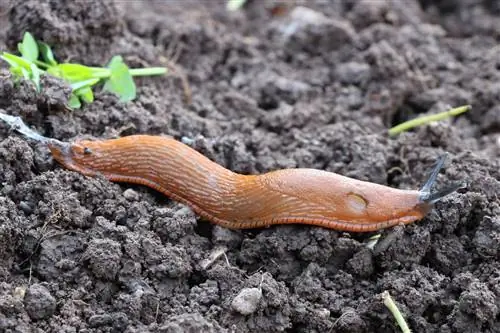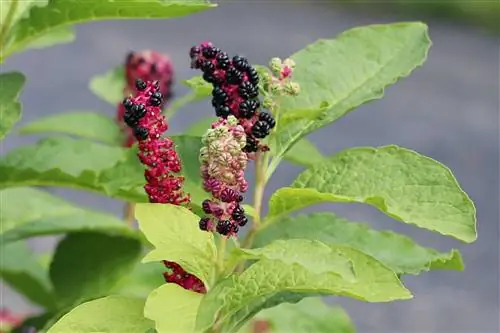- Author admin [email protected].
- Public 2023-12-17 03:39.
- Last modified 2025-01-24 12:45.
Successfully combating slugs Having pests in the garden is a big nuisance for everyone. Snails and slugs in particular can cause a lot of damage because they prefer young plants and are considered particularly voracious pests. As with all other pests, it is important to act quickly to limit the damage. In recent years, the Spanish slug, a species of slug from the Mediterranean region, has spread here and can cause great damage. They are avoided by local snail-eaters such as toads or hedgehogs. Because the Spanish slug is bitter and extremely mobile. She hardly has any natural enemies.
These plants are particularly popular with slugs
First of all, it is important to know which plants should be given special attention to slugs. Animals don't like everything green in the garden. A slug's preferred diet in the garden primarily includes:
- Basil
- Zucchini
- Dahlias
- Salad
- Pumpkin
- Cucumbers
These plants are considered particularly at risk if slugs have settled in the garden. Of course, it cannot be ruled out that other plants are affected by feeding. The Spanish slug in particular is not particularly picky.
How do you know if there are slugs in your garden?
The first signs of the presence of such animals are nibbled leaves and even complete loss of leaves. In addition, you will come across numerous traces of slime in the bed. Then it usually doesn't take long until you spot one of the animals. Nudibranchs can range in color from light brown to dark brown. They feel comfortable in particularly humid, cold environments and usually appear in large groups. The Spanish slug, however, is extremely resistant to sun and drought, which makes it particularly stubborn.
The fight against the slug: slug pellets
The gardener has a number of options to choose from to combat slugs. The slug pellets have proven to be particularly successful in the past. It is important for the gardener to know that particularly early use brings the greatest success. As a rule, experts recommend putting out the slug pellets in March, but no later than April. Then the slugs don't have many plants to choose from as food and they also eat the poison as a makeshift.
The slug pellets cause the animal's body tissue to destroy itself. This product is harmless to the snail's natural enemies.
Tips for using slug pellets:
- Start scattering slug pellets in early spring.
- Ideal time is March/April
- In particularly humid weather, regular sprinkling is important as the poison dissolves quickly
Troublesome but effective: collecting
It will probably cause very few outbursts of enthusiasm, but simply collecting the snails has proven to be particularly effective. This must be done consistently and regularly.
It is helpful if you offer the snails an incentive to gather in one or two places in the garden. This makes your work easier. So-called attracting plants, such as mustard, can help. The snails are attracted to it and will appear there more often.
It also makes sense to lay out a few boards between the beds. These serve as shelter for the snails during the day and as a route at night.
The animals can then be collected there in peace and quiet. Not everyone is comfortable touching the slippery animals with their hands. There are special slug grippers available from specialist retailers for this purpose.
Once you have collected the animals in the bucket, they have to be killed. This is particularly true for the Spanish slug, as they are now displacing native slugs from their usual habitat.
To kill a slug, experts recommend cutting it with secateurs. It may sound cruel, but it's not particularly painful for the animals.
Tips for collecting the snails
Proceed consistently
- Set up collection points, like boards, so that more animals gather in one place
- Divide the slugs with hedge trimmers to make them harmless
Barriers against slugs
Lastly, barriers have also proven to be helpful. So-called snail fences are available in every well-stocked specialist store. They represent an insurmountable obstacle for the animals. However, since these fences are quite expensive, they are only recommended for very small beds.
Other barriers can be made from coffee, lime or even gel. However, you are very dependent on the weather. Because the rain quickly dissolves the barriers and the snails can get to the plants again unhindered.
If you build a snail fence, you should make sure that larger plants cannot serve as a possible bridge.
The myth of the beer trap
When it comes to fighting slugs in the garden, you always hear about the beer trap. The fact is that this attractant really attracts the snails. However, also those who have not yet lived in this garden.
In addition, the beer trap actually needs to be fitted with a lid so that the rainwater does not dilute the beer too much. In dry weather there is a risk that the beer will simply evaporate too quickly.
Conclusion
In order to get rid of a slug infestation in the garden, three methods have proven to be particularly effective: the slug pellets, collection and finally the barriers.
If you combine all three methods together, you should soon be able to enjoy a slug-free garden again. It is important that action is taken in good time to avoid major damage.
Interesting facts
Now you can't stand in front of the vegetable garden and start protecting it with all your skin and hair. Apart from the fact that slugs would still come past you unnoticed, such behavior would also look pretty strange.
There are several methods how you can get rid of slugs without making a monkey of yourself and, above all, without endangering the vegetable garden with poisonous substances, after all, you want to eat the corresponding vegetables afterwards. So you have to choose a method of control that not only preserves the vegetables, but is also harmless to humans later.
This is the case, for example, with the biological option to combat slugs; it is basically evil to the slugs and kind to everyone else. During the day, for example, when the sun is shining, slugs like to hide in damp and dark places. However, there are a few ways to remove these little beasts from the vegetable garden without chemicals, because slugs will destroy the vegetables.
You could, for example, create a kind of snail shelter in certain places in the garden so that the slugs have a place of refuge during the day and don't have to crawl into the vegetable garden. Furthermore, beer not only has an anesthetic effect on humans, but also on these little animals.
For example, if you fill a cup just over half with beer and bury it in the bed, the snails - for whatever reason - will stick to this cup and try to get to the beer. Of course, the cup shouldn't be too full so that the snails fall in and can't get out.


